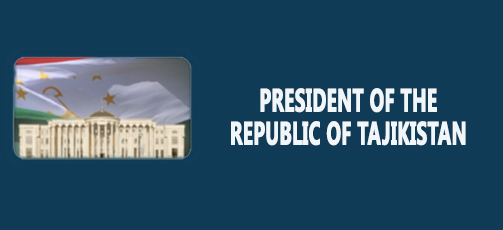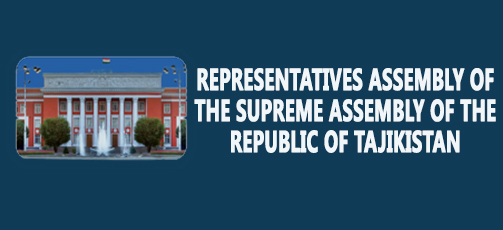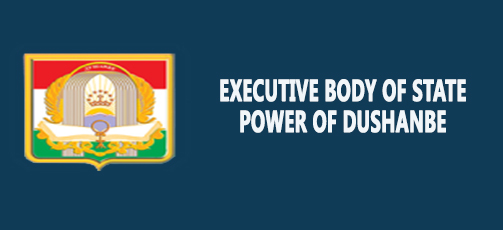Speech during the closing ceremony of the meeting of the National Development Council under the President of the Republic of Tajikistan
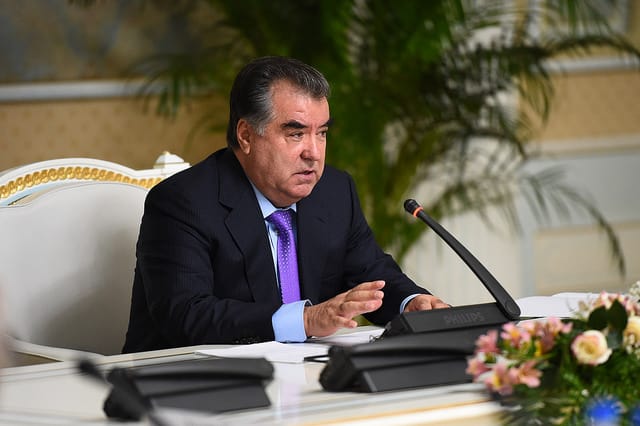
21.06.2016, Dushanbe city
Dear members of the Council!
Distinguished representatives of the development community!
Ladies and Gentlemen!
Today, the meeting of the National Development Council has fully addressed the issues related to the National Development Strategy of the Republic of Tajikistan up to 2030 and the Midterm development program of Tajikistan for 2016-2020 and now I would like to express my opinion on the issues that have been covered today.
First, I would like to summarize the accomplishments of the National Development Strategy of the Republic of Tajikistan up to 2015.
It should be noted that until 2000s, all efforts of the National Government were aimed towards the peace building and stability, restoration of constitutional order and statehood, return of refugees and building of the national unity. It is only from the year of 2000, when we have entered a new development stage and achieved a steady economic growth and improved living standards and quality of life through the constructive efforts, in particular, through the construction and rehabilitation of transport, energy and social infrastructure and implementation of the comprehensive reform program in different sectors.
Our distinguished speakers, namely, representatives of ministries and agencies of the country and development partners have acknowledged a substantial progress and success achieved in economic and social sectors under the implementation of the National Development Strategy up to 2015.
Macroeconomic stability has been ensured in the country from 2007 to 2015, including average annual growth rate at 7% and inflation rate had fallen to single digits.
State budget has increased from 1.8 to 15.7 billion TJS (an increase of almost nine times as much as it was before).
The deficit of the State budget is maintained at 0.5% of GDP.
Public debt has been reduced significantly as compared to GDP and assessed as moderate in accordance with the international debt management standards.
The banking system is continuously growing with assets increased by 2 times, loans by 6 times and amount of payment cards by 30 times.
Favorable investment climate was created; a business dialogue and public-private partnership are developed at national and regional levels as a result of implementation of the required reforms.
From 2007 to 2015, the implementation of the National Development Strategy provided for the creation of more than one million new jobs.
More than 1600 new manufacturing facilities and enterprises have been established in the country, providing for the expansion of local production and the country became an exporter for some of the previously imported goods, like e.g. cement.
Accession of Tajikistan to the credible international organizations and ratification of a number of international conventions aimed at development of trade and investments, facilitated integration and broadened regional and international cooperation of the country.
Total budget of 2,6 billion USD was mobilized to achieve the goals of the strategy and finance public investment projects in priority sectors as part of the implementation of this strategy; 94% of the total financing was provided by development partners,
And, I would like to avail this opportunity, on the behalf of the Government of Tajikistan, to extend my gratitude to the development partners for their support.
A lot of work was done to achieve the strategic goals.
In agriculture, with the measures taken, including the development of new lands, reclamation of fallow lands, improvement of ameliorative conditions of lands, increasing areas of orchards and vineyards, and with the reforms implemented, in particular, the reform on dehkan farm debt resolution led to significant increase of agricultural production and improvement of food security situation.
Construction and reconstruction of hydropower plants, thermal power plants, transmission lines and substations as well as implementation of reform measures in the sector allowed for significant improvement of energy supply system, for uninterruptable operation of the energy infrastructure and export of energy to the neighboring countries in summer time.
In particular, the construction of hydropower plant “Sangtuda-1” and “Sangtuda-2”, the first phase of Dushanbe Thermal Power Plant, “South – North”, “Lolazor-Khatlon” and “Khujand-Aini” power transmission lines have been completed and put into operation.
Access to transport infrastructure, freights, domestic and international trade was improved as a result of construction and rehabilitation of roads, bridges, tunnels and other transport infrastructure. This helped the country to address the issue of communication deadlock.
2000 km. of automobile roads, 132 km. railways, 200 bridges and 31 km. of tunnels have been constructed, rehabilitated and put into operation.
Demographic situation and social protection of population, especially in education and health are always under the loop of the Government and as a result of construction and reconstruction of educational and health facilities and after implementation of the required reforms, the situation in these sectors has improved substantially.
As a result, the poverty was reduced from 53% in 2007 to 31% in 2015.
Life expectancy rate in Tajikistan has increased to 73.5 years on average.
The maternal mortality rate (deaths during or in connection with delivery) reduced in 1.8 times and infant mortality rate in 2.7 times.
These achievements are the results of collective efforts of the Government of the country and hard-working people of Tajikistan, investors, development partners, civil society organizations and friendly countries.
At the same time the external factor and some existing problems still prevent from implementation of measures and indicators of the strategic documents.
World financial crisis of 2008-2009, serious changes of political and economic situations in the world in 2014-2015, economic slowdown in the key trade partners countries for Tajikistan, electricity shortages in winter time, inadequate access to drinking water, very strong dependence of economy from the import, inadequate use of the available resources and opportunities, inadequate quality of services in education and health are one of those factors.
Dear participants!
Long- and midterm development plans and priorities of the country and its people are outlined in the National development strategy of the Republic of Tajikistan up to 2030 and Midterm development program of Tajikistan for 2016-2020.
The present Strategy and the Program take into account international commitments undertaken by Tajikistan during the 70th UN General Assembly Meeting in September 2015 in relation to the Sustainable Development Goals in the field of effective governance, social protection of population, food security, reliable power supply, strengthening of education, health, effective employment and prevention of corruption.
National development strategy of the Republic of Tajikistan up to 2030 is the second long term strategy since the country gained its independence. It defines goals and priorities for the long term development considering the lessons learned, aspirations and intentions of the people of the country, existing resources and opportunities, internal and external factors and forecasting of political and economic global and regional processes.
Ensuring of the decent life conditions for the people of the country in the next fifteen years remains to be the top priority for us.
Therefore we target at increase of the GDP per capita to the required level and inclusion of the country into the list of middle income countries, full elimination of extreme poverty, increase the share of middle class in more than two times from 22% to 50% of total population.
At this stage we defined the following strategic goals, which contribute to the existing strategic goals, i.e. shift from the energy independence to the effective use of electricity, become a transit country and address the problem of communication deadlock, ensure food security and access of population to high quality nutrition and, finally, create a productive employment.
As have been highlighted in my two last Annual Addresses to the Parliament of the country, to achieve the set up goals we have a strong intention to improve significantly effectiveness, diversification and competitiveness of the potential in priority areas and ensure implementation of reforms and serious transformations.
Firstly, we need to raise the level of efficiency, diversification and competitiveness of the real sector of the economy, including the fixed assets of enterprises and factories, natural resources such as water, land and mineral resources, energy, transport and information and communication infrastructure to the level and quality that would allow for an opportunity to increase significantly high quality and competitive production.
Introduction of modern technologies in all these areas plays an important role in this process.
Currently, these priority areas are considered to be the major factor for increase of export of domestic products.
Diversification alone is not enough to achieve the sustainable economic growth, increase production of competitive domestic products, increase export and reduce import and therefore it is necessary to improve the efficiency and diversification of all existing resources.
In the next 15 years, we will largely increase the share of industry in GDP and turn Tajikistan from agro-industrial to an industrial and agrarian country.
We will change the structure of export to export fewer raw materials and more finished goods and products.
Therefore, for the purpose of implementation of the strategy and program, the Government of the country shall specify the sources and available capacities to ensure the development and give priority attention to the development of the important and complex measures.
At the same time, there is a need to implement reforms in real sectors to increase the domestic production of competitive goods and products, provide effective support mechanisms and motivate domestic producers and exporters of goods. In the implementation of these two documents the attention will be given to the key measures.
We made a decision to increase the energy potential from 17 to 45 billion kilowatt-hours or almost in three times until 2030 and implement comprehensive reforms to improve the efficiency and effectiveness of the facilities and institutions in the sector;
Increase export of clean electricity to the neighboring countries to 10 billion kilowatt-hours with support of the regional transmission lines, including CASA-1000;
Construct and rehabilitate railways, automobile roads, bridges, logistics centers, airport and transport corridors and other transport infrastructure and bring the level of its services to the international level and take necessary actions to make Tajikistan a transit hub.
We put a strong focus on development of entrepreneurship and investment facilitation into the economy of the country, since these elements affect positively the development of all sectors, increase revenue collection and generate income.
We will take the necessary measures to simplify taxation system and facilitate trade, ensure government support to businesses and break down artificial barriers for further improvement of investment climate.
Doing Business Report of the World Bank projects for the improvement of the investment climate in Tajikistan in the next 15 years; share of private investments into the GDP will increase from 5 to 25%.
Stable economic development requires sustainable operation of the banking institutions. There is a reason why banking system is called “a blood vessel” of the economy.
Therefore, financial stability and competitiveness of the banks, financial institutions, government agencies and enterprises will be strengthened and we will implement the required reforms in this area.
Dear friends!
Second area of our activities is primary attention to the development of human capital.
With the rapid technological development of the modern society human capital is becoming increasingly a key factor to ensure sustainable economic and social growth of any country.
Presently, the process of globalization and integration of the countries facilitates movement of labor force from one place to another compare to the past years.
But in such context only the countries with competitive human capital can win.
Given all these options and to improve the quality of human capital in the country we pay special attention to the level and quality of education and science, health and culture, social protection and provision of pure drinking water as well as to other utilities services and environment.
Tajikistan will be included in the group of countries with high human capital in the next 15 years, according to the Human Development Index,
Coverage of children by preschool educational institutions will be increased from 12 to 50% of its total number.
In the same period, all adult population will have at least general secondary education and, at least, half of all employed population will have higher education.
To achieve long-term goals at all levels of education, especially in higher education, the quality of education will be greatly improved and the system will be able to release graduates and professionals that could meet present needs and requirements. Educational institutions will, first of all, be equipped with the noble and talented teachers and responsibility of the principals of educational institutions increased.
A new mechanism of assessment of performance of educational institutions will be introduced based on international experience. The results of such assessment will be used for provision of financing and government support to educational institutions, especially to tertiary educational institutions.
Programs and research and innovative projects will be developed in the research institutions with provided connection between science and industry. The foundation is laid for the innovative development and scientific and production clusters in priority sectors of the economy.
At the same time, we will significantly improve the quality of medical care at all levels of health sector.
Life expectancy will be increased to 80 years, maternal and child mortality rates will reach internationally established rates in the next fifteen years.
A professional level and qualification of health care workers, as well as the level and quality of health care services will meet modern requirements. A new mechanism to evaluate the performance of doctors and health care facilities based on international experience will be introduced. Financing and state support to the health care facilities will be provided based on the findings of such assessment.
Quality of utility services, access to clean drinking water, sanitation and housing will be improved and quality of environment protection and disaster management will be increased to improve living conditions for the population.
Targeted social assistance and support will be extended to cover marginalized population.
Efficient use of energy, physical as well as moral and cultural potential of the youth will be provided as a key factor in the development of various industries.
In this regard, the development of human potential at a level corresponding to modern requirements, in the implementation of both strategic documents and relevant sectoral programs key measures, first and foremost, should be aimed at improving the quality of education and health in all its forms and at all levels education and services.
We will also pay special attention to productive employment as the main factor of human development and quality.
Effective use of energy, physical, moral and cultural development of youth will be the core factor for the development of different sectors.
Therefore in the process of implementation of both strategic documents and relevant sectoral program, the key measures shall, first of all, be aimed at improved quality of health and education in all forms and at all stages of education and service provision for the development of human capacity to the level that meet modern needs and requirements.
We will also pay special attention to the productive employment as it is a key factor for the development of human capacity.
We will increase the productive employment by improving employment productivity and quality of labor market, development of processing industry, reducing the number of unemployed, especially among young population, conducting structural reforms and providing for the effective labor migration policies.
In the next 15 years, the level of formal employment will be increased from 40 to 70 percent from the total number of employed population.
For that purpose the new jobs will be created through the development of processing industry, increased textile production, food production, construction, production of chemicals, development and processing of the minerals and through the services in transport and communication, tourism, education and health sector.
Dear participants of the meeting!
Institutional strengthening of the country is another priority for the development.
Analysis of international best practices shows that institutional building is one of the key factors of the economic breakthrough for the country.
This area, together with its institutions, strongly depends on the established operational procedures and regulatory framework.
If we develop the domestic production in the country, institutes and existing regulatory framework cannot effectively realize those products in the country or export to other countries and in this case big stock of the goods produced will not bring any benefits to the country.
In other words, institutional strengthening requires effective work of the institutions and existing regulations.
Therefore, we will significantly increase the efficiency of public and non-governmental institutions and existing rules to strengthen the country’s institutional capacity.
We, thus, will increase the efficiency of judiciary bodies to ensure the rule of law, protect property and human rights, and reduce the bureaucratic deficiencies.
Along with this, we will increase the degree of effectiveness of government institutions, private sector institutions as well as mechanism of support and partnership between entrepreneurs and investors and fight against corruption.
Dear participants!
One of the main conditions for the long term development is to ensure macroeconomic and social stability as well as balanced development of the regions of the country.
In the context of the rapidly changing political and economic situation in the modern world, there is a need to strengthen resilience and competitiveness of the domestic economy to external factors.
The Government of the country takes constant, practical measures to reach the strategic objectives, maintain sustainable macroeconomic indicators and social stability.
At the same time, the objectives and priorities of this strategic document strongly depend on funding from all sources, i.e. government, private sector and development partners.
Therefore, the Government in collaboration with development partners and entrepreneurs shall specify again the amount of financing and sources needed to achieve the objectives and priorities set out in these two strategic documents.
I strongly believe that population of the country, government institutions, investors, political parties, civil servants, mass media and civil society organizations can contribute significantly to the process of development and thus to improving living conditions of population.
Government and all government institutions shall establish constructive cooperation with local entrepreneurs, development partners, foreign investors and other stakeholders based on the long term development priorities up to 2030 and midterm development for 2016-2020 and implement the goals and objectives of thereof using the available opportunities and capacities.
I hope that in the process of implementation of this strategy and program the role of the development partners will be significant since their financial and technical support is vitally important in achievement of the goals of the midterm development.
Taking into account all mentioned above, I instruct the Government, including the Ministry of Economic Development and Trade as well as other ministries and agencies to do the following:
1. Finalize the draft National Development Strategy of the Republic of Tajikistan up to 2030 and Midterm Development Program of the Republic of Tajikistan for 2016-2020, taking into account the recommendations and proposals expressed today and submit to the Government of the country for consideration;
— till the end of this year, develop a draft methodological guide on development of sectoral and regional programs and Monitoring rules and assess the progress of implementation of country strategies, documents and sectoral development programs with involvement of experts, civil society representatives and in cooperation with development partners and submit it to the Government for its consideration;
— organize public awareness campaigns for dissemination of information about key components of the National Development Strategy of the Republic of Tajikistan up to 2030 and Midterm Development Program of the Republic of Tajikistan for 2016-2020 in collaboration with the local government bodies of regions and cities.
2. Ministries and agencies as well as local government bodies of regions, cities and districts:
— shall further develop sectoral and regional programs based on the structure, goals and priorities of the National Development Strategy of the Republic of Tajikistan up to 2030 and Midterm Development Program of the Republic of Tajikistan for 2016-2020, using justified analyses and considering the projected real indicators and specific measures. If needed, bring the existing programs in compliance with the mentioned above documents;
— establish structural analysis units and make assessments of the National Development Strategy of the Republic of Tajikistan up to 2030 and Midterm development Program of the Republic of Tajikistan for 2016-2020 and other sectoral and regional programs; define persons responsible for the management of the processes in these areas,
Distinguished members of the Council!
Distinguished participants of today’s meeting!
In conclusion, I would like to wish the National Development Council further success and progress and express my sincere gratitude to all participants, who have been actively involved in the work of our today’s meeting.
Thank you very much!










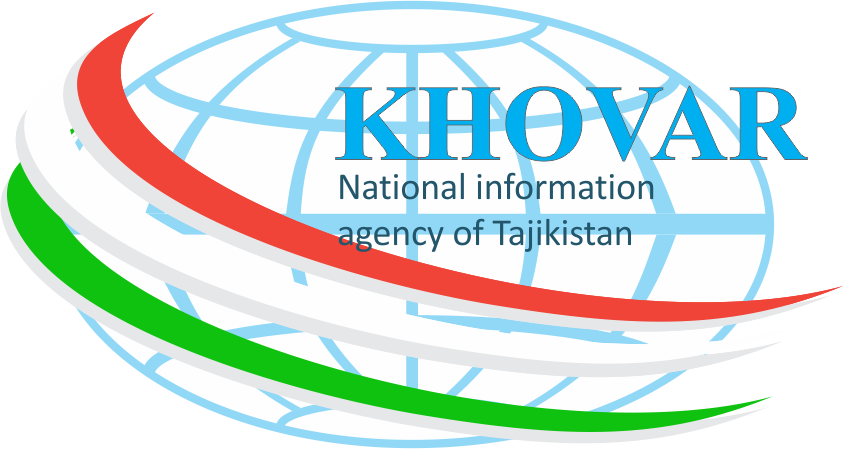
 President Emomali Rahmon makes personnel appointments
President Emomali Rahmon makes personnel appointments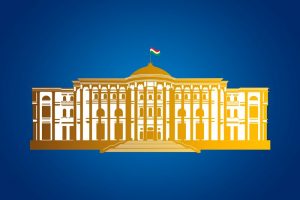 Commentary to orders of the President of the Republic of Tajikistan on the republican competitions «Tajikistan – My Dear Homeland», «Science – Dawn of Enlightenment» and «Book – Dawn of Knowledge» in 2026
Commentary to orders of the President of the Republic of Tajikistan on the republican competitions «Tajikistan – My Dear Homeland», «Science – Dawn of Enlightenment» and «Book – Dawn of Knowledge» in 2026 Emomali Rahmon, Vladimir Putin discuss strengthening strategic partnership between two countries
Emomali Rahmon, Vladimir Putin discuss strengthening strategic partnership between two countries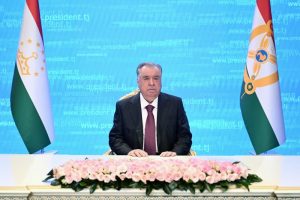 New Year Address of the President of Tajikistan to the Nation
New Year Address of the President of Tajikistan to the Nation Meeting of the Government of the Republic of Tajikistan
Meeting of the Government of the Republic of Tajikistan President Emomali Rahmon attended inauguration of administrative building in military unit No. 3503 of Internal Troops in Bokhtar
President Emomali Rahmon attended inauguration of administrative building in military unit No. 3503 of Internal Troops in Bokhtar Head of state Emomali Rahmon attended inauguration of additional educational building of the Innovative Medical College in Bokhtar
Head of state Emomali Rahmon attended inauguration of additional educational building of the Innovative Medical College in Bokhtar President Emomali Rahmon attended opening of Bokhtar State University’s student dormitory
President Emomali Rahmon attended opening of Bokhtar State University’s student dormitory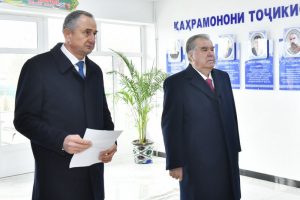 President Emomali Rahmon participated in commissioning of an educational facility and an industrial enterprise in Levakant and Vakhsh
President Emomali Rahmon participated in commissioning of an educational facility and an industrial enterprise in Levakant and Vakhsh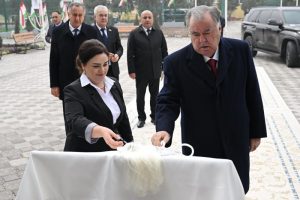 President Emomali Rahmon attended opening of secondary school No. 17 in Bokhtar
President Emomali Rahmon attended opening of secondary school No. 17 in Bokhtar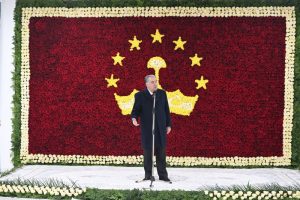 President Emomali Rahmon held a meeting with orphans, gifted students, winners of republican competitions in of Bokhtar
President Emomali Rahmon held a meeting with orphans, gifted students, winners of republican competitions in of Bokhtar









